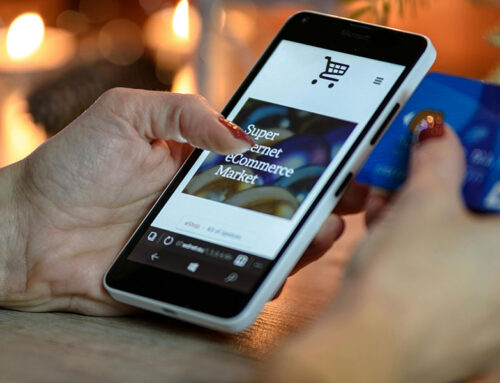The ultimate aim of most businesses is to bring in more money. With the right strategies in place, you’ll find high-value leads and convert them, increasing income. This blog discusses ten of the best business development strategies to increase revenue. Use these to accomplish your revenue generation goals.
Let’s dive in.
10 Best Business Development Strategies to Increase Revenue
Business development involves creating long-term value for your company from relationships, customers, and market. A strong business development strategy gives you a roadmap on how to proceed. Here are ten techniques to mix into yours.
1. Focus on customer relationships
Your company should focus on the rapport it establishes with its customers to ensure long-term success. Consistently delight your customers with your products, personalized services, and unwavering support to drastically increase their lifetime value. Besides, building strong customer relationships can reduce churn, improve brand affinity, and develop brand advocacy.
Here are some more ways to focus on customer relationships:
- Establish trust.
- Seek feedback actively and show genuine care.
- Be timely and consistent in your interactions.
- Reward loyalty with a tool like InviteReferrals.
- Come up with a customer retention strategy.
2. Target former customers
Many times, it’s easier to bring back previous customers than acquiring new customers. For, stats says that while there are 5 to 20% chances of turning a prospect into a customer, there are 20 to 40% chances of winning back ex-customers. So, create a marketing plan to bring back customers who’ve left you.
Here are certain things you can do to win back former customers:
- Get to know why they left and help in fixing those issues.
- Adjust your previous offer to make it more profitable for them.
- Take responsibility, if you’ve made any mistake.
3. Expand your offerings
Widen your product ranges. This way, your customers will buy more from you, increasing your revenue. While expanding your offering, choose those products that a customer would want to use along with your current products/services. For example, if you are a shoe merchant, you may also choose to sell shoe polishes, socks, insoles, shoe brushes, shoe wipes, etc. along with shoes.
Surveying your customers for the product they want is also an ideal start. Ask them what more products they’d love to see you selling at your store. They’ll be happy to give their feedback.
4. Increase your geographic reach
Expanding your business’ geographical boundary isn’t expensive anymore. For, in earlier times, this meant only by opening new physical outlets in new locations. But now technological advancements have cut short distances and dramatically increased your reach for just a fraction of that cost.
Here are some ways to tap into them:
- Increase the distance to which you offer to deliver your offerings.
- Advertise your offerings in neighbourhood regions as well.
When you do any of these, do it in an incremental way. This will ensure manageability.
5. Refine your pricing plan
Re-evaluate your pricing plan to increase revenue. You can do this either way- by lowering them or increasing them.
- Lower your prices: This can help in increasing your revenue by giving you an upper hand over your competitors. Thereby, you’ll sell more items than them.
- Increase your prices: This will work in generating more revenue only if your brand is powerful and believed to be value-offering by your consumers. Besides, if yours is a highly competitive market, thoroughly access your consumer behaviour before implementing this.
6. Focus on existing customers
While customer acquisition is vital for any business to grow, it’s more important to focus on increasing revenue generation through existing customers. For, it’s your current customers who are easily more convincing than others. Besides, it’s more cost-effective too. Here are some marketing tactics to sell more to them.
- Upsell: Upselling is encouraging a customer to buy a costlier version of the item he has chosen to buy. You can do this by showing expensive related products and informational materials, emphasizing its benefits over the lesser-priced options.
- Cross-sell: Cross-selling involves motivating customers to purchase related, supplementary products related to the products they’ve purchased from you.
- Bundle up: When you offer bundled-up products or services, your customers will be motivated to purchase more as they’d be able to save money by purchasing multiple items at one go. You can either pack up products together and sell them as a set or offer a discount on multiple products purchased together.
- Discounts: Offering special discounts can motivate customers to buy more from you by availing of that offer. And this can also bring in more money.
7. Redesign your marketing collaterals
Consumers buy a product for two reasons. One is that they need it, and the other is, that the brand gives them a reason to buy from it. Your marketing collaterals need to be designed well to suit your marketing campaign. If your marketing materials aren’t appropriate or do not bear consistency, consider redesigning them.
Ensure that there is consistency in the message, tone, and design of your website, brochures, letter pads, social media pages, banner ads, presentations, posters, packaging material, flyers, etc. across these. The message should be strong and include the value you provide.
8. Establish a formal referral program
People trust the recommendations of other people more than they trust advertisements from brands. That’s why referral marketing is powerful. Businesses can tap into its huge potential by having a formal referral program in place. With a referral program software like InviteReferrals, you can manage your referral program easily.
Ensure that your customers know that you run a referral program. Motivate customer advocacy by offering rewards to your referrers. This can take shapes like cash, discount on a future purchase, free products, product upgrades, etc. Whatever reward you choose, make sure that it’s something your customers would value.
9. Ask for user-generated content
User-generated content (UGC) is nothing but the content written by your customers about your brand and its offerings. It can take shapes such as product ratings, reviews, testimonials, etc. UGC works because of the same reason as referrals- its authenticity that brings trust. That is, people trust the recommendations of other people.
So, encourage your customers to share reviews, ratings, pictures, videos, etc. about their experiences with your brand and its offerings. This will help other people in making well-informed purchasing decisions. Besides, it also promotes communication between a brand and its customers.
10. Monitor your competitors
Another crucial business development strategy that you should never neglect is monitoring your competitors. Get to know what they offer and analyse how you stand out from them. If you don’t, you need to work on this differentiation. You should set yourself out from the crowd in terms of quality, pricing, value, and/or services to get noticed.
You should keep monitoring them continually. For, this will help you know if they’ve launched new products, the pricing changes they’ve introduced, their attractive marketing techniques, the calibre of staff they hire, their media activities, and more. This way your business too can keep abreast of current trends and learn from others’ mistakes.
Wrapping up
Every business wants to increase its revenue and be prosperous. Applying the right mix of business development strategies can launch it on its way to success. In this blog, we’ve discussed ten of the best strategies to help your business achieve its long-term goals and make money.
Author Bio
Shivani Goyal is a content writer at InviteReferrals, which provides referral software that allows businesses to attract new customers from existing customers through referral campaigns.





